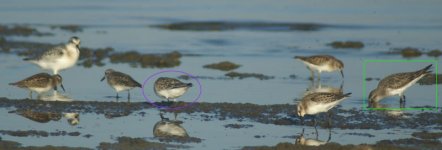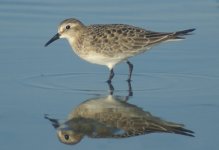tom baxter
Well-known member
Both sp. are usual in my part of southern New Jersey during the spring migration season. I am rather inexperienced with white-rumped sandpiper though. I have heard something about the wingtips being different when folded (not in flight). I don't remember what it was, what are good ways of identifying these two sp. other than size, without direct comparison? Is the size a give away? With the individuals that have been pointed out to me the size did not jump out as strikingly different. All help appreciated.






